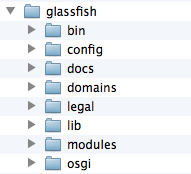NEC's WebOTX - a commercial GlassFish derivative

In a previous article we took a look at an obscure Java EE application server that's only known in Korea and virtually unknown everywhere else. Korea is not the only country that has a national application server though. Japan is the other country. In fact, it has not one, but three obscure application servers. These Japanese servers, the so-called obscure 3, are so unknown outside of Japan that major news events like a Java EE 7 certification simply just does not make it out here . Those servers are the following: NEC WebOTX Hitachi Application Server Fujitsu Interstage AS In this article we're going to take a quick look at the first one of this list: NEC WebOTX. While NEC does have an international English page where a trial can be downloaded it only contains a very old version of WebOTX; 8.4, which implements Java EE 5. This file is called otx84_win32bitE.exe and is about 92MB in size. As with pretty much all of the Asian application servers, the native...